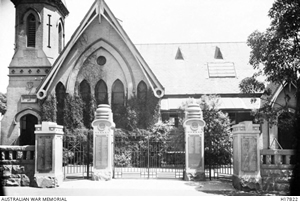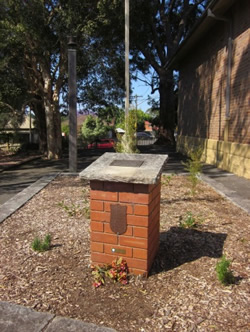Geography ES1
Overview

WW1 Memorial Gates and Wall, Darlington PS
©Public domain (AWM H17822)
Students locate memorials within their school and investigate how the location of memorials can be represented.
About the image on this page
The First World War memorial gates and wall at the former Darlington Public School bear the names of 300 former pupils who
enlisted to fight in the war. The gates and old school building are now part of the University of Sydney.
Teaching and learning activities

Memorial at North Ryde PS, 2014
Question: Where are memorials in our school located?
Researching
Walk around the school and identify memorials located in the school grounds, for example, memorial plaques, gardens, fountains. Discuss their significance.
Take photographs of the memorials for classroom display.
(If the school doesn’t have memorials, locate the area at which the Anzac Day service is held.)
Processing
Students create a pictorial map of the location of one or more of the memorials in the school grounds.
Communicating
Working in pairs students use Lego people to ‘walk through’ their map to the memorial, explaining the surrounds, location and significance.
Learning concepts
These additional questions can be used for discussion or further investigations.
Caring
How can we look after the special memorials in our school?
Community
How does our school community remember important events?
Commemoration
Why are the memorials in our school special places?
Syllabus links
GEe 1 identifies places and develops an understanding of the importance of places to people
GEe 2 communicates geographical information and uses geographical tools
Locating places
Students:
-
investigate how the location of places can be represented, for example: (ACHGK001)
– location of familiar and local places on maps
– description of the location of places